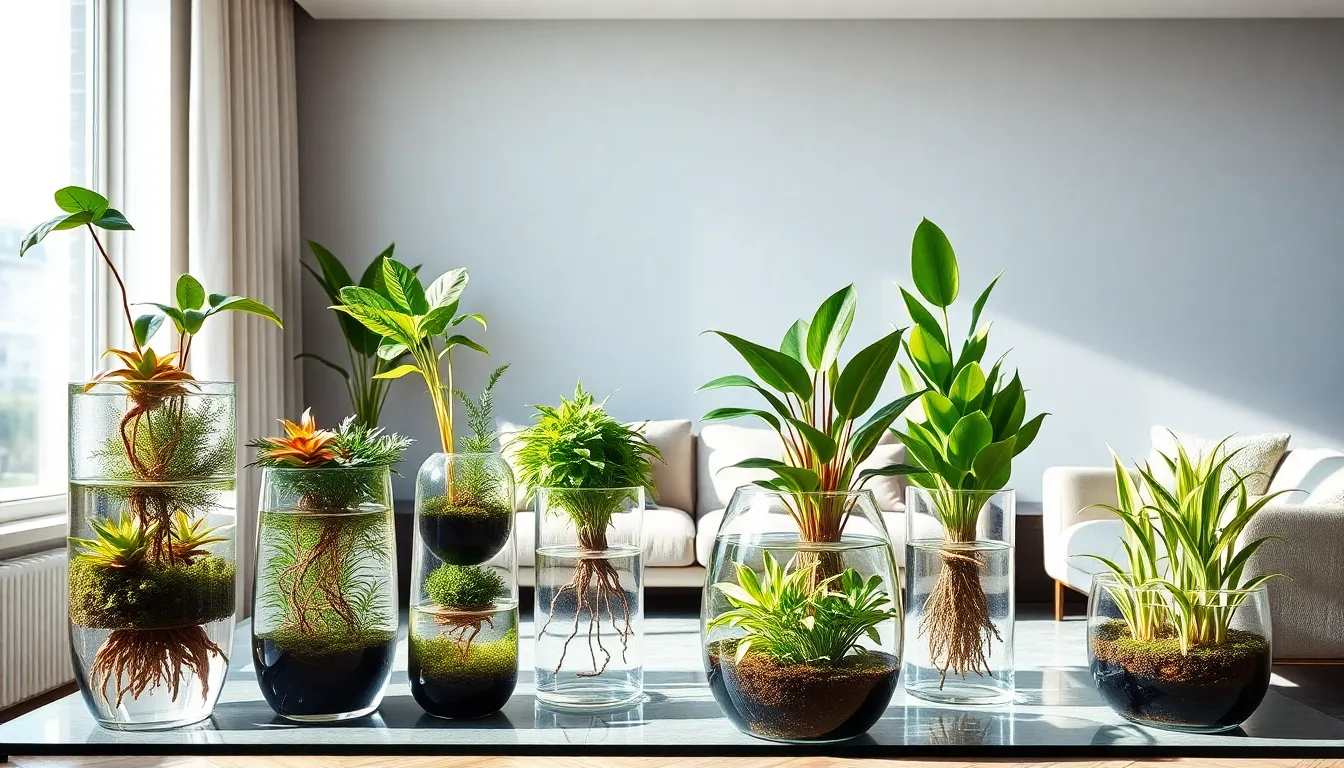Ever thought about turning your home into a mini oasis? Aquatic house plants are the surprising housemates you never knew you needed. These beauties love to swim in a water environment, bringing a splash of life into your living spaces. Whether you’re a gardening novice or a green-thumbed enthusiast, aquatic plants offer unique charm and ease to your indoor decor. So, let’s jump into the wonderful world of aquatic house plants and discover how they can brighten up your home. Who knows, you might just find your new green companion.
Aquatic House Plants

Aquatic house plants are the green marvels that thrive primarily in water. Unlike traditional house plants that need soil, these unique specimens can grow just fine in fishbowls, vases, or even aquariums. They draw their nutrients from the water, making them ideal for those who dream of maintaining plants without the mess of soil.
They come in a variety of forms, from charming floating plants to robust root systems that anchor themselves in the water. This array of choices allows anyone to curate an aquatic ensemble, perfectly suited to their decor and lifestyle. Whether it’s a lavish centerpiece or a simple accent piece, aquatic house plants offer versatility that can cater to any aesthetic.
Benefits of Aquatic House Plants
Incorporating aquatic house plants into your home decor provides a plethora of benefits. First and foremost, they enhance air quality. While plants do a great job of purifying the air, aquatic plants are particularly efficient in absorbing carbon dioxide and releasing oxygen, making your living space feel fresher.
Also, these plants are relatively low maintenance, perfect for those with busy lifestyles. Forget about daily watering or soil upkeep: simply change the water occasionally, and you’re good to go. Besides, they add a pop of color and a unique aesthetic that soil-grown plants can’t replicate.
The calming effect of water can also reduce stress, creating a serene atmosphere in your home. Whether you’re lounging in your living room or focusing on work, aquatic plants make a lovely and tranquil backdrop.
Popular Types of Aquatic House Plants
Many people wonder which aquatic house plants will best suit their homes. Here’s a quick rundown of popular types:
- Lucky Bamboo – This plant isn’t really bamboo but a type of Dracaena. It thrives in water and brings good fortune along with amazing vibes.
- Water Hyacinth – Known for its beautiful lavender flowers, this plant floats gracefully and purifies water. It’s great for large water containers but can become invasive in natural bodies.
- Pothos – This legendary favorite comes in various colors and can grow in water, creating stunning cascading vines.
- Anubias – Often used in aquariums, Anubias is a robust plant that can grow partially submerged, making it flexible for different setups.
- Philodendron – With its heart-shaped leaves, this popular plant can also thrive in water. It’s particularly forgiving, making it ideal for beginners.
How to Care for Aquatic House Plants
Caring for aquatic house plants is refreshingly easy. Here are some straightforward guidelines to ensure your green friends thrive:
- Change the Water Regularly: Every two weeks, replace the water with fresh, clean water. This keeps the plants hydrated and helps prevent algae growth.
- Light Requirements: Most aquatic plants enjoy bright, indirect sunlight. Placing them near a window but not in direct sunlight will keep them happy.
- Nutrients: You might consider adding liquid fertilizer once a month to boost growth. Just a few drops will do the trick.
- Check for Pests: Occasionally, aquatic plants can be prone to pests. Inspect leaves for any signs of infestation and treat them quickly to avoid damage.
- Temperature Matters: Ensure that the water remains within a comfortable range (typically between 65°F and 80°F) to keep the plants flourishing.
Common Issues and Solutions
Even the best caretakers can encounter a few bumps in the road. Common issues with aquatic house plants include:
- Algae Growth: If you notice green algae, it’s likely a sign of excessive sunlight or nutrient imbalance. To tackle this, reduce light exposure and change the water frequently.
- Yellowing Leaves: This indicates nutrient deficiency or poor water quality. Simply change the water and consider adding liquid fertilizer.
- Root Rot: If the plant seems sluggish, check for mushy roots. Trim any rotten ones, and provide fresh water to revive your plant back to health.
Decorating with Aquatic House Plants
Aquatic house plants can elevate your decor in exciting ways. The key is to be creative and allow these plants to become a focal point. Consider using bold, colorful containers that contrast beautifully with the greenery. Grouping plants of various heights can create an eye-catching display, bringing dynamism into your space.
For smaller areas, floating plants or terrariums can be perfect accents, adding texture without occupying too much space. These unique features can also serve as conversation starters. Imagine guests marveling at your thoughtfully arranged aquatic garden as they sip on their drinks.
Also, placing aquatic plants beside traditional house plants can create a striking wilderness aesthetic, breaking the monotony of the classic greenery.

